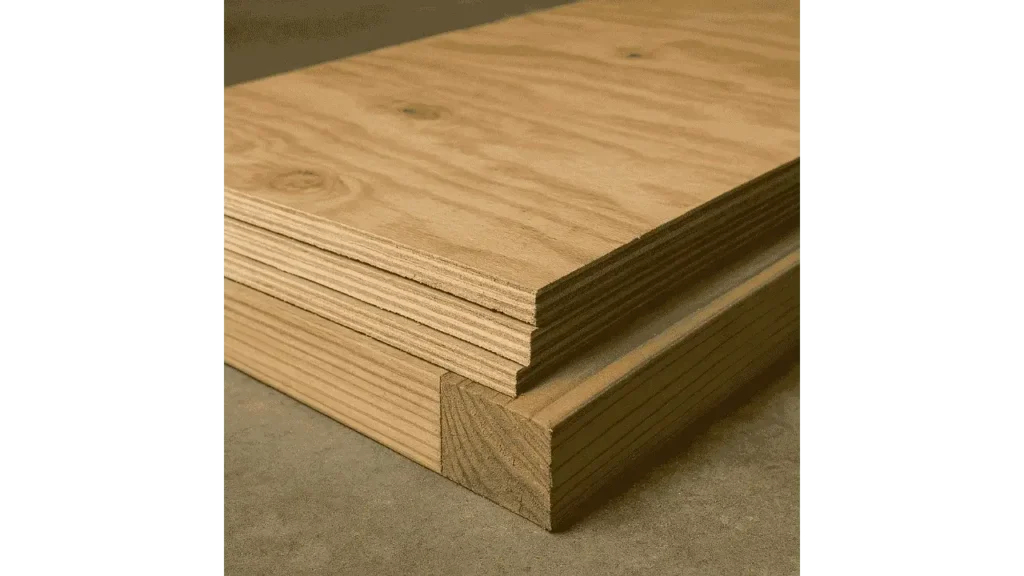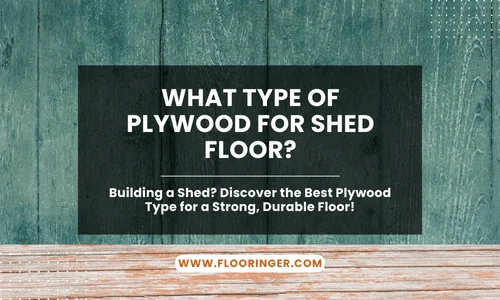A sturdy and reliable shed floor is essential for any shed’s overall durability and functionality. Choosing the right type of plywood for a shed floor ensures the structure can handle daily use, heavy equipment, and changing weather conditions. This guide covers everything you need to know about selecting the best plywood for your shed floor and how to build a solid foundation.

Do Sheds Need a Floor?
Yes, most sheds require a strong, stable floor to support the structure and protect stored items. A well-built floor prevents moisture from seeping in, deters pests, and provides a level surface for storage and activities. While some sheds are built directly on concrete slabs, many designs use wooden floors for flexibility and cost-effectiveness.
What is the Best Flooring for a Shed?
Pressure-treated plywood is widely considered the best flooring material for sheds. This type of plywood is treated to resist moisture, rot, and insect damage, making it ideal for outdoor use. For added durability, 3/4-inch or 5/8-inch pressure-treated plywood is recommended. It offers strength and stability to support heavy items and withstand daily wear and tear.
Shed Floor Framing:
A shed floor requires a solid framing structure to support the plywood flooring. Typically, the floor frame is constructed using pressure-treated 2×6 or 2×8 lumber for joists, spaced 16 inches apart for added strength. The frame distributes the load evenly and prevents the floor from sagging or shifting over time.
Read More: What Goes Under Wood Flooring?
Concrete Pad for a Shed Floor
A concrete pad provides a durable and maintenance-free foundation for a shed. It is resistant to moisture, pests, and shifting. However, it’s more expensive and less flexible than wood framing.
Built-in Wooden Shed Floor
A built-in wooden floor offers flexibility and cost savings. With proper framing and moisture-resistant plywood, a wooden shed floor can provide long-lasting support and protection against outdoor elements.
Should a Wooden Shed Have a Floor?
Yes, wooden sheds should have a proper floor to maintain structural integrity and protect items stored inside. A wooden floor keeps moisture out, prevents rot, and offers insulation against cold ground temperatures. Additionally, a raised wooden floor improves ventilation and discourages pests from entering the shed.
How Much Weight Can a Shed Floor Hold?
The weight capacity of a shed floor depends on the materials used and the framing design. A properly constructed floor with 3/4-inch pressure-treated plywood and 2×6 joists spaced 16 inches apart can typically support heavy equipment, tools, and storage items, handling loads of 50 to 70 pounds per square foot or more. For heavier loads, closer joist spacing or thicker plywood may be necessary.
How Do You Add a Floor to a Shed?
To add a floor to an existing shed, first assess the shed’s foundation and frame. Install pressure-treated joists and support beams, ensuring they are level and secure. Attach plywood sheets to the frame using screws or nails, leaving small gaps between sheets for expansion. Finish by sealing the floor with a weatherproof coating to protect against moisture.
How Do You Build a Shed Floor Base?
Building a solid shed floor base is crucial for long-term durability.
Set Up and Install Floor Base
Begin by leveling the ground and laying down gravel or concrete blocks for support. Construct the floor frame using pressure-treated lumber and space the joists 16 inches apart. Secure the frame and install pressure-treated plywood on top, ensuring it is level and well-supported.
How Do You Build a Simple Shed Floor?
Install Plywood Flooring
After framing the shed floor, install 3/4-inch pressure-treated plywood over the joists. Fasten the plywood using galvanized screws or nails to prevent rust and ensure long-term durability. Seal the surface with a weather-resistant coating for added protection.
Wooden Shed Floor Components:
Pressure-Treated Plywood is essential for shed floors due to its moisture resistance and long-term durability. It prevents rot and structural damage in outdoor conditions.
Joists made from pressure-treated lumber provide structural support. Spacing them 16 inches apart ensures the floor can handle heavy loads without sagging.
Support Beams are larger pressure-treated beams placed beneath the joists. They add extra stability and help evenly distribute weight across the floor.
Moisture Barrier like a vapor barrier or gravel layer, protects the shed from moisture buildup. This prevents water damage and extends the life of the shed floor.
Conclusion:
Choosing the right plywood and properly constructing the shed floor are critical to ensuring your shed’s longevity and functionality. Pressure-treated plywood paired with a solid framing structure provides durability, moisture resistance, and strength to support heavy loads. Whether building a new shed or upgrading an existing one, investing in quality materials and proper construction techniques will result in a sturdy and long-lasting shed floor.
